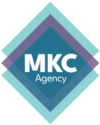Demand Generation is a big-picture approach to what it means to be a brand in the market. To engage your customers, you must answer their questions, solve their problems, and otherwise posit yourself as an indispensable part of their workflow. However, one size does not fit all, as you cannot solve every problem for every person—leads must be vetted. Effective Demand Generation can help attract qualified leads. Still, even in the best-case scenario, you’ll want a human being to take a peek at inbound leads to verify how qualified they are.
Funneling is a common metaphor for this business practice. Funneling and funnels themselves involve capturing a high quantity at the top level and gently nudging until a practical and predictable flow is achieved. For business, this is consumers. For actual funnels, they’re pretty handy for separating eggs.
I digress.
With the dual considerations of making your brand visible to potential customers and converting these prospects into actionable leads through Demand Generation and funneling, having a strategic understanding of how the process nurtures from the informational to transactional will help you assert your brand and more effectively convert.
To help explain all the jargon and shenanigans involved, we’ll break down some of the big terms (Informational, Transactional, Nurturing, and Inbound) to better understand how they interrelate and how, together, they can drive sales through the greater project of Demand Generation.
Demand Generation
The two primary goals of Demand Generation are awareness of your product or service offering and cultivating a long-term relationship with key prospects. This can be done through sales enablement, PR, advertising, affiliate media, or inbound marketing.
Notice I said long-term above. Since many leads cannot convert on-site, we must go into a few principles which help define the sales project. These will help you refine your strategies for generating demand and help you to secure the leads that are most actionable for your offerings.
The Informational to Transactional Process
Simply put, the path from Informational to Transactional is how a customer goes from learning about your service to purchasing it. Information is gathered, which may eventually lead to a sale.
Think about it like this:
You just went to the fancy grocery store (you know, the kind with the a-la-carte olives) and saw a new type of butternut squash. There are minor signs that show growing with beautiful blooms and broad leaves. You decide you want to grow it yourself in your garden, but hey, it’s mid-July, and you’ve got tomatoes on the go. So instead, you take a flyer that features new types of produce and keep it for later. Over the winter, as you research your upcoming garden, you find blogs that list the squash varieties, product sheets that feature info on the plant, and more!
Next Spring, when you’re planting, you remember the squash, its name, its photo, decide to purchase and plant one for yourself!
By viewing the sales process in terms of Informational to Transactional rather than a binary of Sale / No Sale, you can guide your customers unobtrusively and make them seek you out when they are ready to convert.
Just because you weren’t able to “convert” to purchasing the seeds the day you learned about them doesn’t mean that the supplier can’t guide you on your way to an eventual sale. This process is called “nurturing.”
Nurturing is accomplished by continually guiding the sales process through services that may not convert immediately but keep your brand at the top of the customer’s mind. This principle is especially true in large organizations in contracts that may lock them off from selling opportunities.
The process of nurturing can be accomplished in several ways. Firstly, by providing informative and engaging content on your website, you encourage loyalty in your user base. Through CTA’s, free downloads, feedback opportunities, or automated/personalized email follow-up, you are keeping your brand fresh in their eyes and providing value outside of the sales binary. The more value you can give a customer, the more likely they will convert to your services when the demand is high, or their current contracts expire.
The more nurturing you can offer, the higher your inbound traffic will be as they revisit your site before sale (and hopefully after!)
Inbound (sales, marketing) is a technique wherein companies purposefully attract prospects and qualify them through CTA’s to best establish fit for their product.
Inbound marketing refers to the content which provides value to site visitors. A broad inbound marketing strategy involves optimizing your site for search engines, providing valuable and beautiful content, and generally promoting your services through advertising campaigns. The more options for a customer to interact and the more your content encourages them to, the better!
As you can see, these concepts exist within each other and heavily interrelate. Inbound marketing could encourage a site visitor who, through informative content, could become interested, sign up for your nurturing strategy, and eventually convert. In practice, this is demand generation—the offering and answering of questions and needs within the sales lifecycle. It’s some heady stuff, sure, but easy to implement with some guidance.
Megan Killion Consulting is an expert in integrating these strategies and growing your inbound through demand generation. Contact me or book a meeting to start your inbound strategy and grow your business with consistent demand generation.

